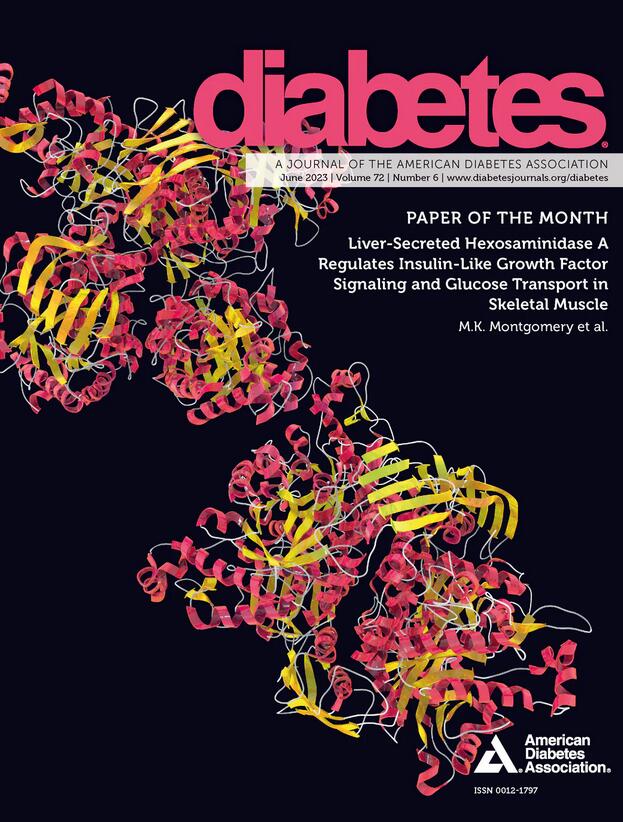209-OR: Direct and Indirect Effects of Redlining on Diabetes Prevalence via Food Access
IF 7.5
1区 医学
Q1 ENDOCRINOLOGY & METABOLISM
引用次数: 0
Abstract
Structural racism is known to influence diabetes outcomes; however, there is limited understanding of potential pathways for the relationship. Given the importance of access to healthy food for adults at risk for diabetes, this study investigated food access as a possible pathway between structural racism and diabetes prevalence at a census tract level. A national dataset of 11,457 census tracts across 201 counties, within 38 states was used for the analysis. Prevalence of diabetes in each census tract was based on CDC PLACES data. Structural racism was defined as historic residential redlining using Home Owners’ Loan Corporation (HOLC) residential security maps from the Mapping Inequality project (higher scores indicate more redlining). Food access was defined using the modified retail food environment index (mRFEI) calculated for each census tract as the number of healthy food retailers divided by the number of both healthy and less healthy food retailers (higher mRFEI scores indicate better food access). Direct and indirect relationships between redlining and diabetes prevalence via food access was investigated using structural equation modeling run in Stata v17, controlling for population of each census tract. Mean prevalence of diabetes was 11.8. Redlining (0.22, p<0.001) and lower food access (-0.11, p<0.001) were directly associated with higher prevalence of diabetes. Redlining was indirectly associated with diabetes via food access (-0.10, p<0.001). Based on these findings, structural racism is associated with higher diabetes prevalence via decreased food access at a census tract level. Interventions to improve access to healthy food options at the community level may help address the impact of structural racism on the health of individuals, particularly those at risk for diabetes living in historically redlined neighborhoods. Disclosure R.J. Walker: None. S. Linde: None. L.E. Egede: None. Funding National Institutes of Health (R01DK118038, R01DK120861, R01MD013826, R01MD017574, R01MD018012)209-OR:通过食物获取途径重新规划对糖尿病患病率的直接和间接影响
众所周知,结构性种族主义会影响糖尿病的结果;然而,人们对这种关系的潜在途径了解有限。鉴于获得健康食物对糖尿病高危成人的重要性,本研究以人口普查区为单位,调查了结构性种族主义与糖尿病患病率之间可能的途径。分析使用了一个全国数据集,该数据集包含了 38 个州内 201 个县的 11,457 个人口普查区。每个人口普查区的糖尿病患病率基于疾病预防控制中心 PLACES 数据。结构性种族主义是指使用 "绘制不平等 "项目(Mapping Inequality project)中的 "房屋所有者贷款公司"(Home Owners' Loan Corporation,HOLC)住宅安全地图(分数越高,表示红线越多),将历史上的住宅红线界定为结构性种族主义。食物获取的定义是使用修正后的零售食品环境指数(mRFEI),计算出每个人口普查区健康食品零售商的数量除以健康和不太健康食品零售商的数量(mRFEI 分数越高,表示食物获取越好)。在 Stata v17 中运行结构方程建模,在控制各人口普查区人口的情况下,研究了红线与通过食物获取糖尿病患病率之间的直接和间接关系。糖尿病的平均患病率为 11.8。赤线(0.22,p<0.001)和较低的食物获取率(-0.11,p<0.001)与较高的糖尿病患病率直接相关。通过食物获取途径,赤贫与糖尿病间接相关(-0.10,p<0.001)。根据这些研究结果,结构性种族主义与人口普查区的食物获取减少导致糖尿病患病率升高有关。在社区层面采取干预措施,改善健康食品的可及性,可能有助于解决结构性种族主义对个人健康的影响,尤其是那些生活在历史上被划定为红色社区的糖尿病高危人群。披露 R.J. Walker:无。S. Linde: 无。L.E. Egede:无:无。资助 美国国立卫生研究院 (R01DK118038, R01DK120861, R01MD013826, R01MD017574, R01MD018012)
本文章由计算机程序翻译,如有差异,请以英文原文为准。
求助全文
约1分钟内获得全文
求助全文
来源期刊

Diabetes
医学-内分泌学与代谢
CiteScore
12.50
自引率
2.60%
发文量
1968
审稿时长
1 months
期刊介绍:
Diabetes is a scientific journal that publishes original research exploring the physiological and pathophysiological aspects of diabetes mellitus. We encourage submissions of manuscripts pertaining to laboratory, animal, or human research, covering a wide range of topics. Our primary focus is on investigative reports investigating various aspects such as the development and progression of diabetes, along with its associated complications. We also welcome studies delving into normal and pathological pancreatic islet function and intermediary metabolism, as well as exploring the mechanisms of drug and hormone action from a pharmacological perspective. Additionally, we encourage submissions that delve into the biochemical and molecular aspects of both normal and abnormal biological processes.
However, it is important to note that we do not publish studies relating to diabetes education or the application of accepted therapeutic and diagnostic approaches to patients with diabetes mellitus. Our aim is to provide a platform for research that contributes to advancing our understanding of the underlying mechanisms and processes of diabetes.
 求助内容:
求助内容: 应助结果提醒方式:
应助结果提醒方式:


